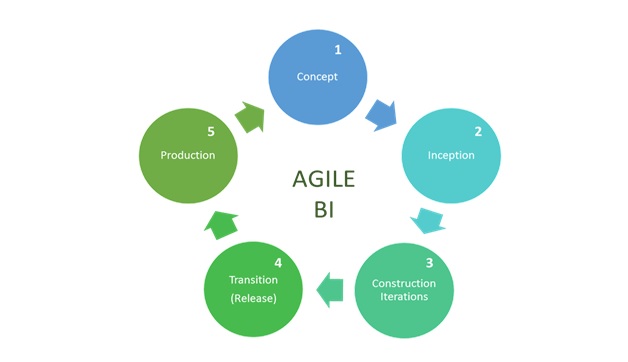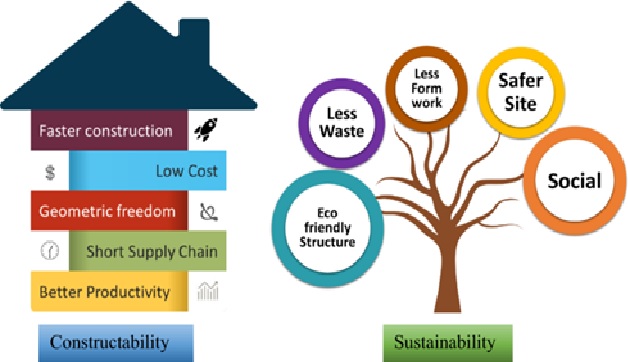Methodology of Agile BI
Agile BI is a recurring process that requires continuous development of online data visualization, dashboards, reports, and new functionality to keep current processes optimized while also developing new ones. By adopting agile development, business intelligence projects are broken down into smaller projects. The goal is set for small businesses large businesses alike to help companies adapt to business goals and constantly changing market conditions. [2]

Figure 1. The Methodology of Agile BI
Figure 1 shows By implementing agile business intelligence platforms, organizations can see a relatively faster return on investment.
Concept
A stage where teams start to put together a broad-level vision of the BI initiative. The concept is just defining a top-level map of the project without much detailing. Usually, this is achieved through a whiteboard session or maybe on a piece of paper.
Inception
Here, developers achieve a major milestone by implementing the active participation of stakeholders. Within the inception stage, it also covers:
- Train the stakeholders on the basics of agile
- Identify the funding of the BI initiative and set up the support
- Find out potential sources of data
- Prioritize business requirements and also identify the needs, keeping in mind the challenges around budget and timeline
Construction Iterations
In this stage, the developer delivers a working prototype that is meeting the growing requirements of stakeholders. This will be a cyclical method and repetition of this stage and the next one but in a series of increments.
Transition
This is the phase where the product that has gone through the previous stage of construction iterations, is being prepared for production movement. Stage 3 and 4 happen in increments and finally, after completion of these two stages, the product reaches the final stage (production). During the transition phase, a developer:
- Keeps the stakeholders updated
- Finalize testing scenarios
- Finalize all necessary documentation
- Release of the pilot to a small group
- End-user training
- Train the production team
- Final deployment into production
Production
This is the final stage, where users start operating the system that has come out of construction iterations and transition stages. During this stage:
- Users will operate the system, dashboard, and reports
- Identify defects in the system and potential areas of improvement.
These changes will begin and construction iterations stage and move forward.
This is a critical stage as users need to keep an eye on the operability of the system and overall system utilization.[1]
Evolution Of The Agile Methodology:
The agile methodology developed in the 1980s when the existing such as waterfall methodology with its extensive documentation and heavyweight approach began running into problems. The current methods took a long time to develop, and by the time the solution was developed, business requirements had changed. Often projects would have to be cancelled midway, or the final solution seldom reflected the existing business requirements.[3]
References:
- https://www.techfunnel.com/information-technology/agile-business-intelligence/
- https://planergy.com/blog/agile-business-intelligence/
- https://www.polestarllp.com/agile-methodology-business-intelligence-project
Cite this article:
Thanusri swetha J (2021) Methodology of Agile BI, AnaTechMaz, pp. 41















